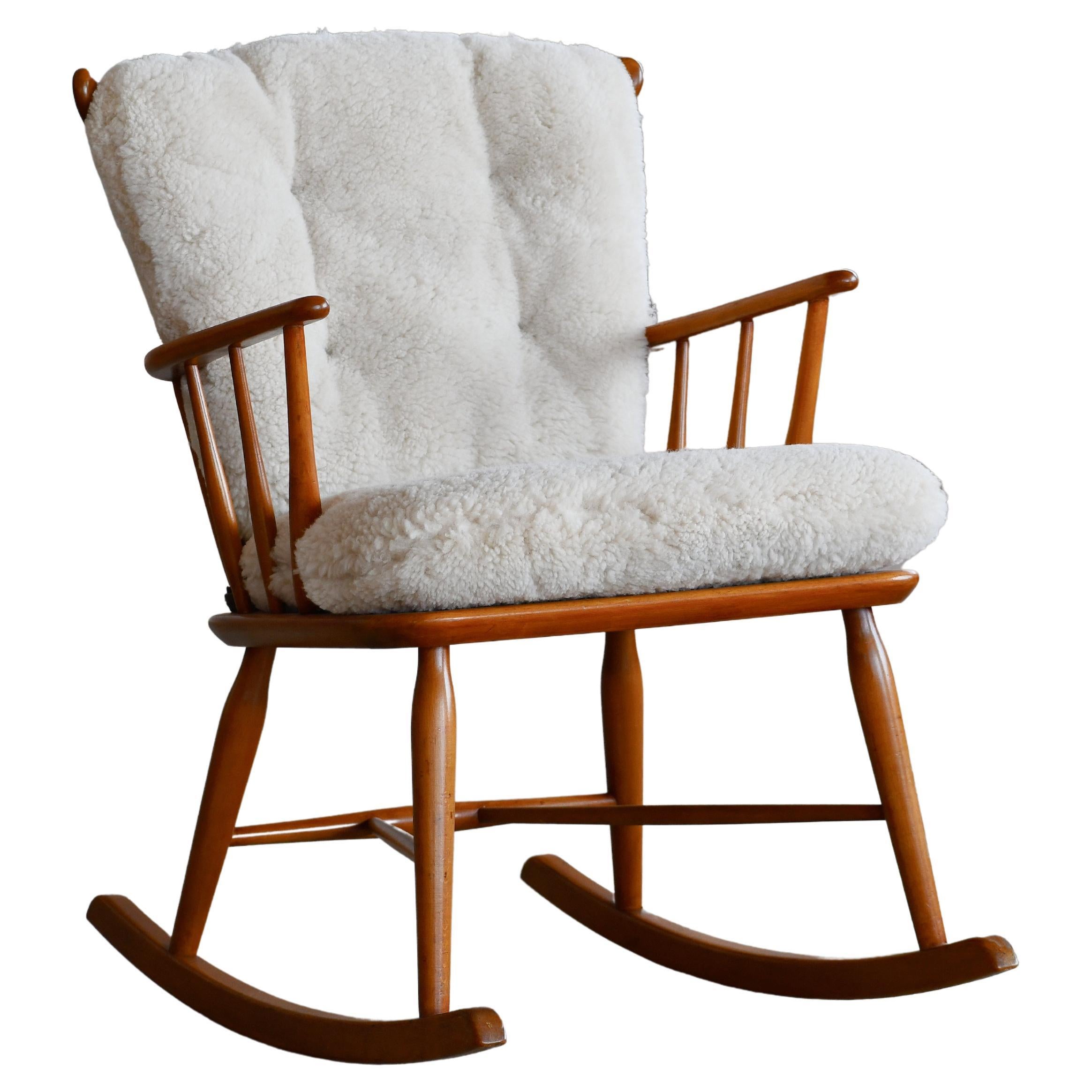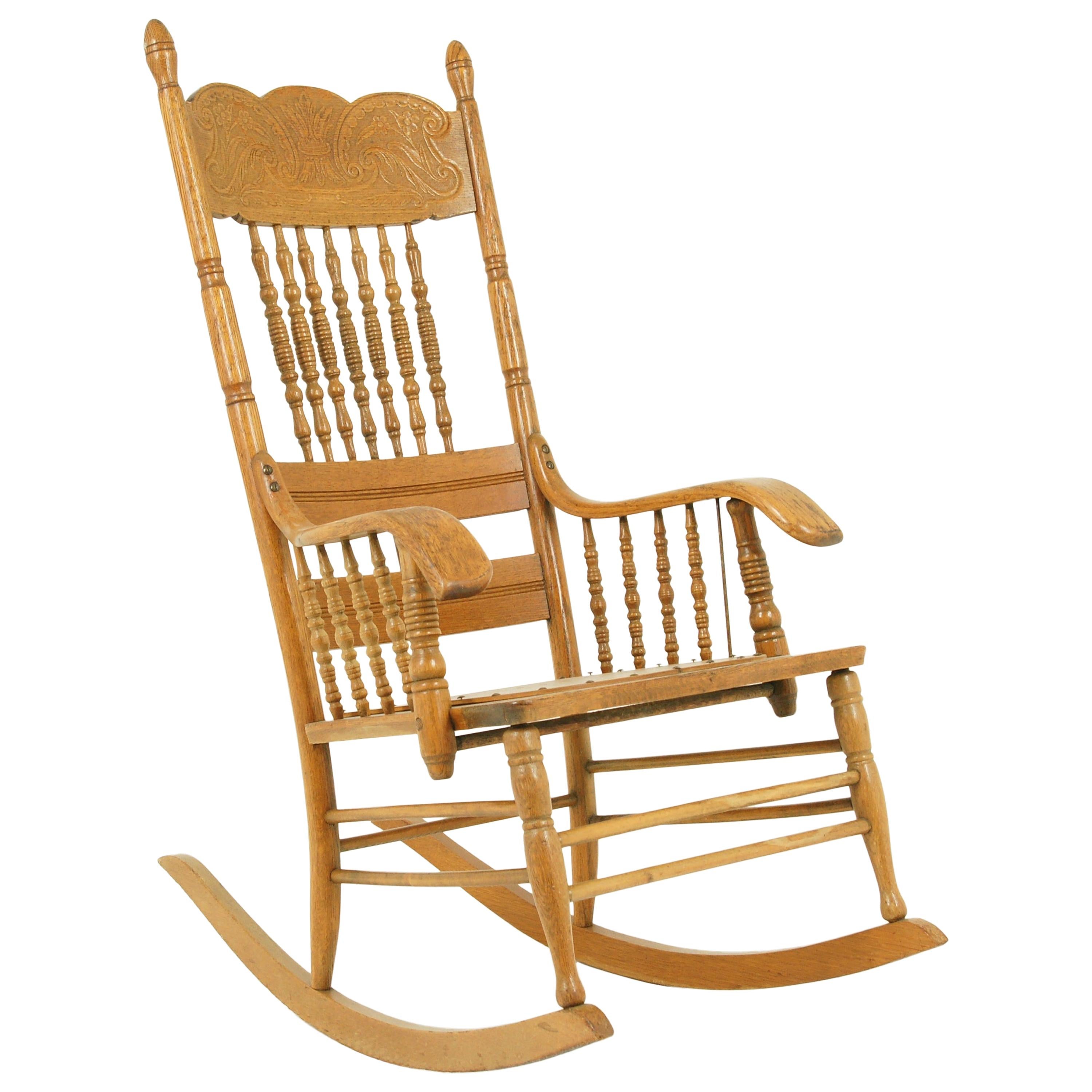History and Evolution of the Vintage Spindle Back Rocking Chair

The vintage spindle back rocking chair, a seemingly simple piece of furniture, boasts a rich history interwoven with evolving design aesthetics, material innovations, and regional preferences. Its enduring appeal stems from a blend of comfort, craftsmanship, and a nostalgic connection to simpler times. Understanding its evolution reveals a fascinating story of adaptation and enduring style.
Origins and Historical Context, Vintage spindle back rocking chair
While pinpointing the exact origins is difficult, the rocking chair’s ancestry can be traced back to early forms of rocking stools and chairs appearing in Europe as early as the 17th century. These early iterations often lacked the characteristic spindle back, instead featuring simpler designs. The spindle back, with its vertical, turned spindles forming the chair’s back, emerged later, likely gaining popularity in the 18th and 19th centuries. The combination of the rocking mechanism and the spindle back design solidified in the American colonies, becoming a popular and iconic piece of furniture. The chair’s rise coincided with the increasing availability of readily-sourced wood and the development of specialized woodworking tools.
Evolution of Design and Materials
Early spindle back rocking chairs were primarily constructed from readily available hardwoods like oak, maple, and cherry. As woodworking techniques improved, more intricate designs and spindle patterns emerged. The simpler, Shaker-inspired designs with their clean lines and functional aesthetic contrasted with more ornate Victorian-era pieces featuring elaborate carvings and curved spindles. The transition from hand-crafted to mass-produced chairs also impacted design, with some designs becoming more streamlined and standardized for efficiency. The use of paint and finishes also evolved, from simple stains and varnishes to more elaborate painted decorations. Later iterations incorporated different materials like bentwood and wicker for variations in style and cost.
Styles and Regional Variations
Regional variations in spindle back rocking chair design are noticeable. New England chairs often featured simpler, more austere designs, reflecting the Shaker influence. Southern styles sometimes incorporated more elaborate carvings and turned details, reflecting a different aesthetic preference. The availability of local woods also influenced design; for example, regions abundant in oak might feature chairs predominantly made from that wood. The size and scale of chairs also varied based on regional preferences and the intended use (e.g., larger chairs for men, smaller ones for women and children).
Timeline of Significant Milestones
| Era | Notable Features | Materials Used | Representative Images |
|---|---|---|---|
| 17th-18th Centuries (Europe) | Early rocking stools and chairs; simple designs, often without spindle backs. | Various hardwoods, depending on regional availability. | A depiction of a simple, early rocking stool, showing basic construction with minimal ornamentation and a curved base for rocking. The wood is dark and possibly oak or similar hardwood. The stool is relatively low to the ground. |
| Late 18th – Early 19th Centuries (American Colonies) | Emergence of the spindle back design; simpler, more functional styles. | Oak, maple, cherry. | A drawing of a rocking chair with a relatively plain spindle back, featuring straight spindles and a simple, slightly curved seat. The wood appears light-colored, possibly maple or a similar light hardwood. The overall design is understated and functional. |
| Mid-19th Century (Victorian Era) | More ornate designs; elaborate carvings, curved spindles, and decorative elements. | Oak, walnut, mahogany; sometimes painted or varnished with decorative finishes. | An illustration of a rocking chair with a highly decorated spindle back, featuring intricately carved spindles and a curved, ornate crest rail. The wood is dark and polished, possibly mahogany or walnut. The chair has a more elaborate overall design, reflecting Victorian aesthetics. |
| Late 19th – Early 20th Centuries | Mass production; some simplification of designs for efficiency; introduction of bentwood and other materials. | Oak, maple, beech; bentwood, wicker. | A photograph of a rocking chair with a simpler spindle back design, suggesting mass production techniques. The wood might be stained a darker color. The overall shape is less ornate than Victorian examples, showing a trend toward more streamlined designs. |
Identifying and Appraising Vintage Spindle Back Rocking Chairs

Knowing how to identify and appraise a vintage spindle back rocking chair requires understanding its construction, materials, and maker’s marks. This knowledge allows for accurate dating and valuation, essential for collectors and enthusiasts. Factors such as condition and provenance also significantly influence the chair’s worth.
Key Features of Authentic Vintage Spindle Back Rocking Chairs
Authentic vintage spindle back rocking chairs often exhibit specific characteristics. These include the style of the spindles themselves – early examples might have simpler, more rustic spindles, while later pieces may show more elaborate or decorative designs. The joinery is another key indicator; hand-cut dovetail joints or mortise and tenon joints are common in older chairs, signifying craftsmanship and age. The wood type is also crucial; popular choices included oak, maple, cherry, and walnut, each with its unique grain and color. Finally, the overall shape and proportions of the chair, including the curve of the rockers and the height of the back, can help determine its age and origin. Variations in these features reflect changing styles and manufacturing techniques throughout the chair’s history.
Determining Age and Value
Age and value are intertwined. Maker’s marks, often found stamped or branded on the underside of the seat or on the legs, are invaluable for identifying the manufacturer and sometimes the date of production. However, many chairs lack such marks. In these cases, determining age relies on stylistic analysis comparing the chair’s features to known examples from specific periods. Condition significantly impacts value. A chair in pristine, original condition commands a much higher price than one needing extensive restoration. The type of wood, its quality, and the craftsmanship also influence value. For example, a finely crafted chair made from rare or highly figured wood will be worth more than a mass-produced example. Rarity of a particular design or maker also increases value. A chair by a renowned maker, or one from a limited edition, can fetch significantly higher prices. For example, a rocking chair attributed to a well-known furniture maker from the Arts & Crafts movement might be valued substantially more than an anonymous piece.
Common Restoration Techniques
Restoring a vintage spindle back rocking chair requires careful consideration and expertise. Common techniques include repairing damaged spindles, often by replacing them with carefully matched pieces. Loose joints are strengthened using traditional joinery methods or appropriate adhesives. Wood repairs might involve filling cracks and wormholes with wood putty or epoxy, followed by careful sanding and refinishing. Upholstery restoration can involve re-covering the seat with period-appropriate fabrics or repairing existing fabric. Refinishing often involves cleaning the chair, removing old varnish or paint, and applying new finish that complements the wood’s character. It’s crucial to prioritize preservation over alteration; authentic features should be maintained whenever possible.
Checklist for Assessing Condition
A thorough assessment is crucial before purchase or restoration. This checklist will help guide your evaluation:
- Structural Integrity: Examine the rockers for cracks or weakness. Check the joints for looseness or instability. Inspect the spindles for damage or missing pieces. Assess the overall stability of the chair.
- Upholstery: Evaluate the condition of the upholstery fabric. Check for tears, stains, or significant wear. Assess the padding for firmness and comfort. Note any evidence of previous repairs or replacements.
- Finish: Examine the finish for scratches, dents, or significant wear. Note any areas of discoloration or fading. Assess the overall quality and consistency of the finish. Look for evidence of previous refinishing attempts.
- Maker’s Marks: Carefully examine all surfaces for any maker’s marks, stamps, or labels. Document any markings found, including their location and description.
- Wood: Identify the type of wood used. Note any signs of wood rot, insect damage, or other deterioration. Assess the overall quality and condition of the wood.
